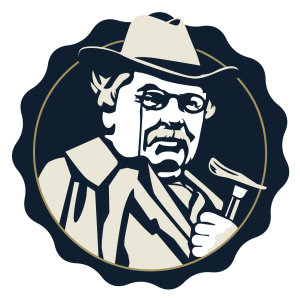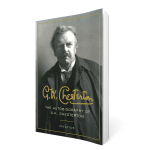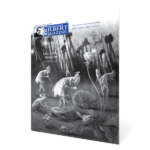In June of 1936, when G.K. Chesterton’s death was announced in every major newspaper in the world, many of the headlines and subheads mentioned that he had just finished writing his autobiography. It was as if he knew before laying down his pen that the final book he had to complete in his life was his life.
But one of the major complaints about his autobiography when it was published several months later, was that he wrote so much about others and so little about himself. It is a complaint that reflects a poor knowledge of Chesterton, who cared greatly about other people and thought little of himself. It is also a complaint that can be dismissed. The book of Chesterton on Chesterton is a marvel of self-revelation, covering the main stages of his life, even if those stages seem to be filled with other characters besides the main character. And yet, the complaint is understandable, because if there was one thing the lovers of Chesterton wanted it was more Chesterton, and if this was his last book, there would be no more. Little did they know how many more Chesterton books were still to come.
The opening paragraph may be unrivaled in the genre of autobiography. It fulfills all the reader’s expectations, providing requisite information with wit, in a perfectly constructed piece of prose:
Bowing down in blind credulity, as is my custom, before mere authority and the tradition of the elders, superstitiously swallowing a story I could not test at the time by experiment or private judgment, I am firmly of opinion that I was born on the 29th of May, 1874, on Campden Hill, Kensington; and baptised according to the formularies of the Church of England in the little church of St. George opposite the large Waterworks Tower that dominated that ridge. I do not allege any significance in the relation of the two buildings; and I indignantly deny that the church was chosen because it needed the whole water-power of West London to turn me into a Christian.
Prefigured in that paragraph are scenes from Chesterton’s first novel, evidence of the affection for his country but also his love of locality, and major symbols of his faith. From there we move on to a happy and magical boyhood, filled with his father’s stories and the creativity and imagination that was clearly endowed to young Gilbert Keith Chesterton, returning a hundredfold. A toy theatre would be a doorway to infinite worlds, and cardboard cutouts would provide endless inspiration, riding in and out of fairy tales on three fingers: “for those three human fingers are more magical than any magic figures; the three fingers which hold the pen and the sword and the bow of the violin; the very three fingers that the priest lifts in benediction as the emblem of the Blessed Trinity. There was no conflict between the two magics in my mind.”
Chesterton takes us with him to St. Paul’s School, which he calls his period of being a dunce, and to Slade Art School, which he calls his period of being a lunatic. It seems unjust, he admits, “that I should have succeeded in becoming a journalist merely because I failed to become an artist.”
Next we are on Fleet Street where he describes his life as a journalist, and muses on how he has done as well as he has: “I think I owe my success (as the millionaires say) to having listened respectfully and rather bashfully to the very best advice, given by all the best journalists who had achieved the best sort of success in journalism; and then going away and doing the exact opposite.”
The man who wrote books on politics, economics, travel, and religion, devotes a chapter to each, covering his battles against corrupt politicians, his gospel of property, his adventures in other countries, and his greatest adventure of finding his way to the Church.
Each scene is indeed filled with the many characters that the complainers claim get in the way of the book’s main subject. But those other characters are not uninteresting, especially when described by Chesterton. “On almost every occasion when I have met somebody, I have met somebody else.” We meet William Butler Yeats, but even more fascinating is Yeats’ father whom Chesterton describes as one of the best talkers he has ever known. We meet George Wyndham, but sitting at the table is Winston Churchill, whose observations on the world are as paradoxical as Chesterton’s, but when confronted about what is actually going to be done about it, he simply smiles the inscrutable smile of a politician. We meet one of Chesterton’s publishers, but sitting in the office is Thomas Hardy, who gets into an argument with Chesterton. Hardy, he says, was blasphemous, but not proud. It is pride that is a sin, not blasphemy. Chesterton attributes Hardy’s blasphemy to the decline of England’s rural culture “which gave men bad religion and no philosophy.” We meet Chesterton’s friends, J.M. Barrie, the creator of Peter Pan, and of course, Shaw, Wells, and the great Belloc.
Looking back on it all, Chesterton humbly offers that he “could never do anything more useful than writing.” Even though he does not think much of his work, he does not regret what he has written: “I hardly know of a word I would alter.”
Barely mentioned is the poet, but the whole book is a poem. What is mentioned, however, is the detective, and it is very clear that Chesterton has laid out his life as a detective story. It begins with a mysterious figure in a toy theatre, the man with the golden key. It ends with a divine figure, the God with the golden key, who unlocks the mystery to everything.
If you would like to purchase the book, click here.


